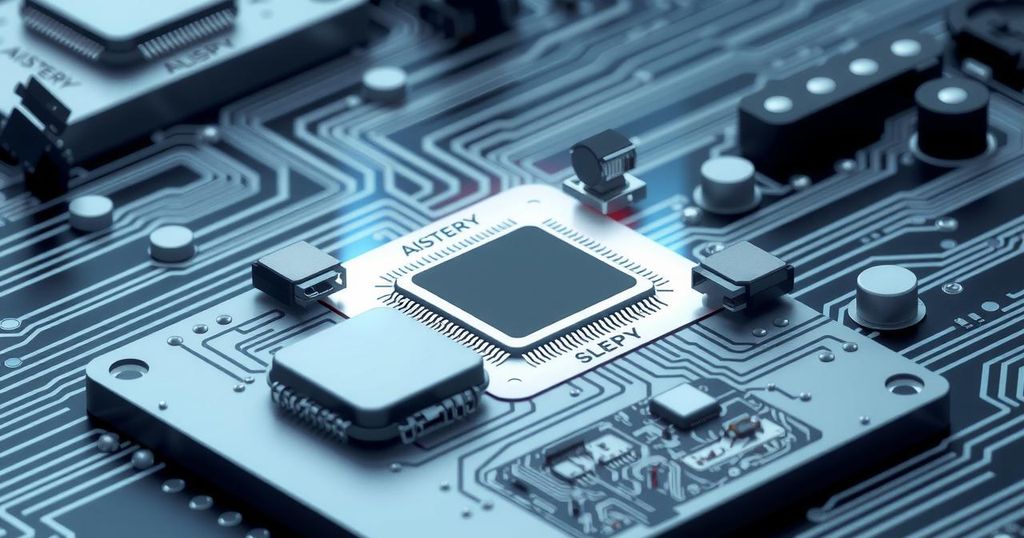China’s Semiconductor Progress: EUV Developments and Strategic Proposals

China is advancing in EUV lithography with domestic systems, aiming for trial production in Q3 2025. A proposal for anonymous semiconductor purchases reflects efforts to circumvent US restrictions. Naura expands its equipment portfolio to strengthen the domestic supply chain. Meanwhile, Intel contemplates a merger with GlobalFoundries, and Kioxia forecasts a NAND supply increase amid rising AI demand. Recent unveilings of Intel’s Panther Lake processor demonstrate a commitment to innovation amid competitive pressures.
In recent developments, China achieved significant advancements in extreme ultraviolet (EUV) lithography, particularly through a domestic system under trial at Huawei’s facilities. The expected trial production is slated for Q3 2025, with mass production set for 2026, utilizing laser-induced discharge plasma (LDP) technology, a promising alternative to ASML’s existing systems. Success in this area could enable China to reduce its dependence on foreign suppliers amidst ongoing US export restrictions.
Leading the charge, Huawei and SMIC are focused on scaling EUV production. However, challenges remain, such as increasing power output and producing high-precision components. If China successfully emerges as the second country with EUV capabilities, it could disrupt the global semiconductor market, although geopolitical tensions may pose risks to their progress.
Furthermore, a proposal by a Chinese lawmaker for anonymous semiconductor purchases aims to help blacklisted domestic firms bypass US export controls. By replacing public tenders with private transactions, companies can protect overseas suppliers from potential sanctions. This approach reflects China’s strategy to navigate increasing US restrictions affecting its semiconductor and AI sectors, revealing issues of transparency in sourcing technology.
Naura Technology Group, aiming to refine China’s semiconductor equipment supply chain, has expanded its portfolio since 2015 but still struggles with advanced lithography machinery. Its recent investments signal a commitment to enhancing domestic semiconductor manufacturing and reducing foreign technology dependency, while the efforts in lithography are led by Shanghai Micro Electronics Equipment (SMEE).
In the US, speculation arises around Intel’s potential merger of its foundry business with GlobalFoundries, akin to AMD’s strategy. A former TSMC executive theorizes this could put Intel in a competitive position against TSMC, especially under the new leadership of Lip-Bu Tan, who assumes the CEO role in 2025. Concerns exist over antitrust implications but restructuring could bolster US semiconductor production.
Kioxia projects a 10-15% increase in NAND shipments for 2025, despite anticipated demand shortages in the second half due to AI server requirements. Kioxia focuses on QLC NAND production to optimize efficiency and prepare for a rebound in NAND demand, particularly in AI and automotive sectors in late 2025.
Intel’s Panther Lake processor has been unveiled, showcasing its first public demonstration, which integrates advanced AI capabilities powered by the new 18A process. This initiative supports its broader manufacturing goals supported by a US$3 billion CHIPS Act allocation, with the product launches anticipated by early 2026.
In summary, China is making remarkable strides in semiconductor technology, particularly in EUV lithography, while navigating US export controls and geopolitical tensions. The initiatives introduced by lawmaker Wen-Hui Guan reflect an adaptive strategy to secure foreign technology amid increasing restrictions. Companies like Naura are focused on building domestic infrastructure to further enhance China’s semiconductor capabilities. Concurrently, the US semiconductor landscape faces its own restructuring opportunities, notably with Intel exploring partnerships to enhance competitiveness. Insights from these developments indicate the critical role played by geopolitical factors in shaping the semiconductor industry landscape ahead.
Original Source: www.digitimes.com




